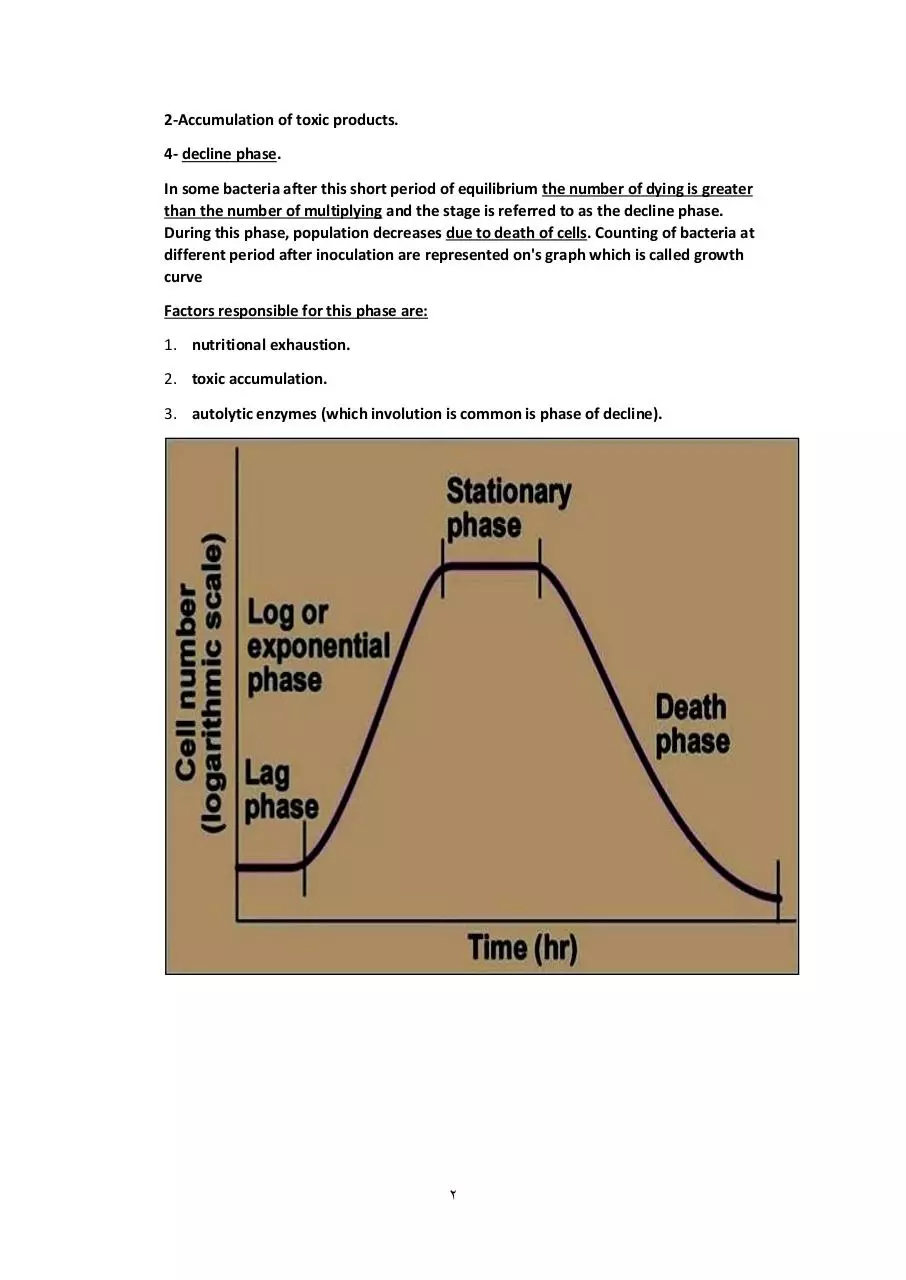lec2 (PDF)
File information
Title: growth curve
Author: اØمد ÙŠØيى توÙيق
This PDF 1.5 document has been generated by Microsoft® Word 2016, and has been sent on pdf-archive.com on 16/11/2016 at 19:04, from IP address 5.1.x.x.
The current document download page has been viewed 296 times.
File size: 483.18 KB (3 pages).
Privacy: public file



File preview
GROWTH CURVE
احمد يحيى توفيق
When organism are cultured in appropriate fluid media (liquid medium), the organism
takes a little time to adjust itself on its new environment, there would be increase in
the size of bacteria without any multiplication for some time this is called
1-Lag Phase
during this phase. This occurs:
1. Increase in size of cell.
2. Increase in metabolic rate
3. Adaptation to new environment.
The length of lag phase depends upon:
1. Type of bacteria E. coli, T.B.
2. Good and better medium, shorter this phase.
3. The phase of culture form which inoculation takes.
4. Size of inoculums.
5. Environmental factors like temp., pH, …
2- log phase
After this initial phase, the organism commences to multiply by simple binary fission there
will be increase in number of bacteria to the extent that medium look turbid to the naked
eye. This is called log phase Logarithmic phase. As multiplication is by geometric
progression. Logarithms of viable count plotting against time gives straight line, during this
periods occurs. bacteria have high rate of metabolism.
during this phase. This occurs:
1.bacteria increase in number.
2.bacteria will be more sensitive to antibiotics.
control of log phase is brought about by:
1.nature of bacteria.
2.Environment of medium (temp.).
3.Concentration of material in media.
3- stationary phase
After sometime due to the exhaustion of nutritional factors of the medium and the
accumulation of waste products, some bacteria die, and there is a balance of dead and
living bacteria. This is the no. of bacteria multiplying is equivalent (=)The no. of bacteria
dying. Production may occur during his stage .This is called stationary phase. In equal rate
of multiplication and death, it may be due to:
1-Depletion of nutrient.
1
2-Accumulation of toxic products.
4- decline phase.
In some bacteria after this short period of equilibrium the number of dying is greater
than the number of multiplying and the stage is referred to as the decline phase.
During this phase, population decreases due to death of cells. Counting of bacteria at
different period after inoculation are represented on's graph which is called growth
curve
Factors responsible for this phase are:
1. nutritional exhaustion.
2. toxic accumulation.
3. autolytic enzymes (which involution is common is phase of decline).
2
Download lec2
lec2.pdf (PDF, 483.18 KB)
Download PDF
Share this file on social networks
Link to this page
Permanent link
Use the permanent link to the download page to share your document on Facebook, Twitter, LinkedIn, or directly with a contact by e-Mail, Messenger, Whatsapp, Line..
Short link
Use the short link to share your document on Twitter or by text message (SMS)
HTML Code
Copy the following HTML code to share your document on a Website or Blog
QR Code to this page

This file has been shared publicly by a user of PDF Archive.
Document ID: 0000508173.